Batmobiles in Gotham City. Crewless ground vehicles and maneuver in future urban warfare
Science fiction and popular culture have always been a valuable source of useful ideas for military strategists. The Batman analogy is useful when it comes to the challenges that ground forces face when operating in dense urban space, as well as the unique capabilities they need for effective action.
Since the first comic books about Batman were published, many new technologies have appeared that have greatly expanded the capabilities of Batmobile, allowing it to be improved both with physical (a closet for transporting spare clothes in the 40s) and with cybernetic (password to protect against hacking in the 60s) points of view.
Perhaps the biggest technological leap of Batmobile is associated with the integration of unmanned and autonomous capabilities. Since the 90s, Batman could already ride on autopilot and remotely control the Batmobile in the narrow and dark streets of Gotama. By the 2000s, it could operate on its own, transferring the data back to Batcave headquarters for quick processing and subsequent use.
If Batman and his high-tech supercar are associated with dynamic progress and technological innovation, then Gotham is a reflection of the political, social and environmental sunset: an uncontrollable and unchecked urban space immersed in a gray, semi-criminal atmosphere. Corruption and the growing threat of violence, a crowded and dissatisfied population, a vulnerable critical national infrastructure are characteristic of Gotham City, and in this complex urban space, Batman must be stronger, smarter and more cunning than his opponents in every episode.
Crewless ground vehicles in the future metropolis
Against the backdrop of massive global migration to cities and the increased fragility of urban spaces due to environmental and geopolitical crises, the likelihood of future conflicts in cities is increasing. Realizing this, the armies of the world are renewing their capabilities to enable them to fight and win in an urban environment, and automatic ground vehicles (AHA) are expected to play an important role in these future operations.
This article discusses the development of doctrine, tactics and methods of warfare in relation to the AHA in the future urban space, plus the development of uninhabited technology. The analysis of the problems of AHA deployment at the present stage with specific examples of Israel and Syria is given, as well as the unique operational challenges that commanders and combat units face in future cities are named. It also provides a brief overview of testing and evaluating models for the American and British armies, as they implement their own AHA programs, ultimately hoping to accept them for supply.
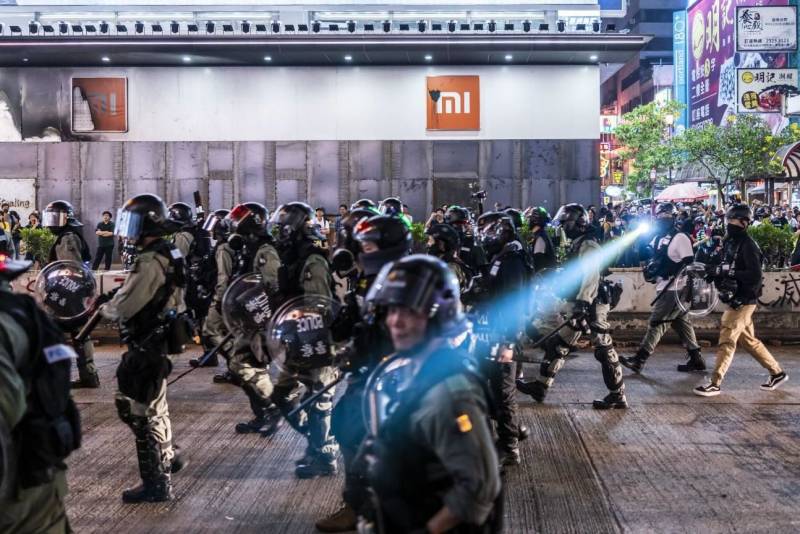
Modern gotham city. Special Forces Police try to suppress social, political and economic unrest in Hong Kong
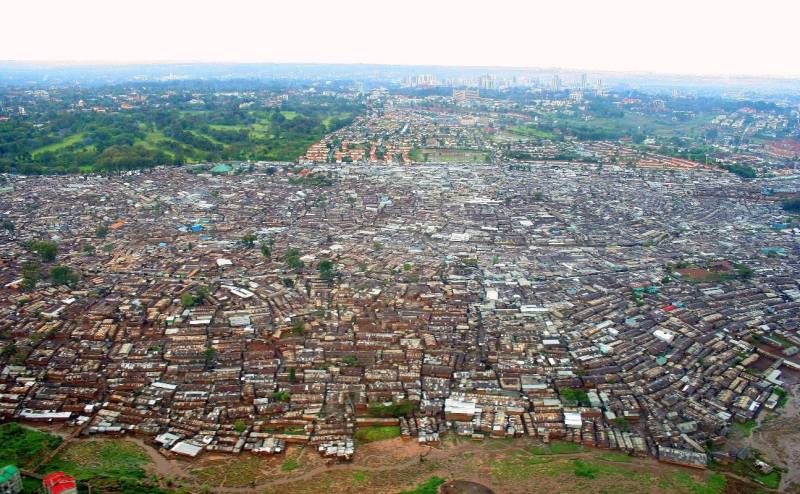
Nairobi, one of the fastest growing metropolitan areas, attracts foreign investment, but at the same time is exhausted by the problems associated with pollution, overcrowding and the environment.
Robots in urban conflicts and cities
Urban conflicts are increasingly occurring. These conflicts have global potential, ranging from traditional hostilities in megacities and metropolitan areas to urban unrest and unrest, as illustrated by the democratic protests in Hong Kong or the Yellow Vests movement in France, to gangsterism and criminal riots in major cities and slums. They pose an extreme danger to the civilian population, challenge the military, police and intelligence agencies, and also seriously complicate the work of humanitarian organizations.
Conflict and technological merger
The urban conflict is also the scene of a technological confluence, as the military and security forces, as well as their opponents, use new technologies ranging from drones and artificial intelligence - "applications and algorithms" - to cyber warfare and robotization. RobotsAssassins and lethal autonomous systems raise new operational and ethical issues. While science fiction is filled with robot wars, modern technological progress is consistently expanding the presence of unmanned weapon systems on the battlefield.
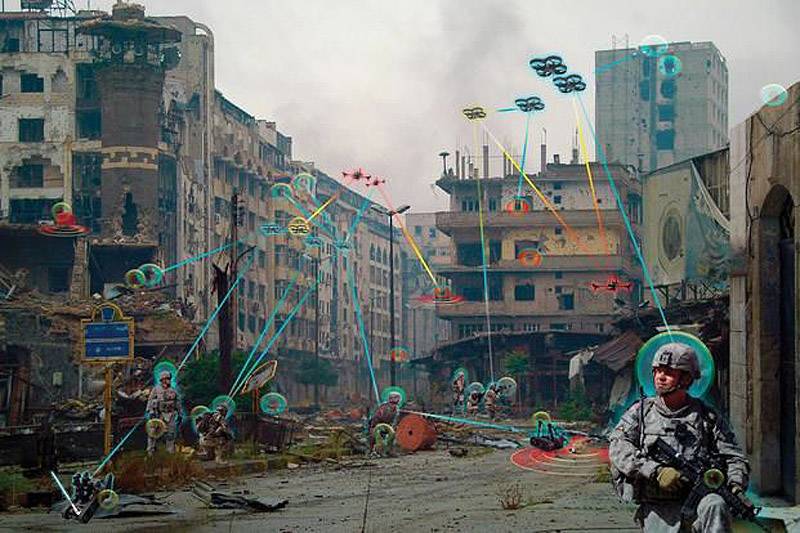
Vision of the American Army's Military Research Laboratory of the future urban battle, dominated by the combined actions of inhabited and uninhabited platforms and the management of military operations based on artificial intelligence
Drones are seen today as an evolving tactical challenge. Their swarms can be used to overcome air defense or deliver explosives and weapons mass destruction. Non-state armed groups also use drones to advance their goals, using them as an instrument for monitoring, reconnaissance and collecting information, strike weapons or a vehicle, for example, in the form of crewless submarines for transporting drugs. Not in such a distant future, one can expect the integration of AI into shock drones in an urbanized operational space.
Due to the increase in the share of urban combat in the variety of conflicts of the future, ground vehicles are rapidly integrating into power structures. For example, the United States Marine Corps is testing ground-based robotic sensor platforms to expand its surveillance and reconnaissance capabilities, and remotely controlled vehicles for underground tasks. His war lab is also experimenting with uninhabited weapons platforms, including an Expeditionary Modular Autonomous Vehicle (EMAV), equipped with rockets or a 12,7mm machine gun for use in cramped urban environments.
Robots in urban space
Robots and autonomous systems are changing the tactics of warfare and the methodology of patrolling the city by the police. Robots and AI are the two locomotives that change and blur the boundaries between the physical and virtual worlds, changing the military’s approaches to recruiting, recruiting, training and retaining operators. All functions will be affected, starting from transportation and logistics with automated and timely replenishment of supplies, AI-based maintenance and re-equipment, and ending with reconnaissance and collection of information and warfare. Robots will also increase operational flexibility when operating underground, which is eagerly awaited by the armies of some countries, for example, Israel.
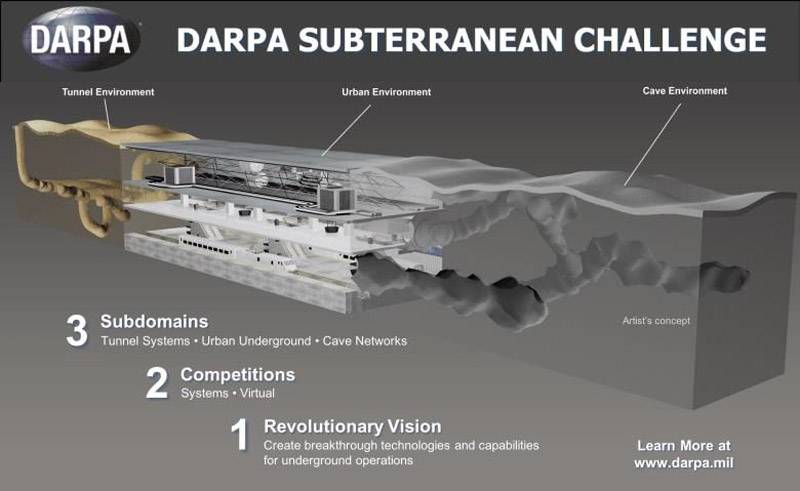
As part of the DARPA SubT Challenge project, a search is underway for ways to eliminate gaps in situational awareness in the context of underground operations
As the proportion of habitable and uninhabited platforms on the battlefield changes, the processes of planning, decision making, observation, reconnaissance, and information collection will change. New approaches to visualization and the formation of the image of the area are becoming mandatory, since machines with AI should easily navigate in the operational space. This applies equally to the military, public security and humanitarian components of urban operations. The complexity and density of megacities (in the physical and virtual space) only increase the level of complexity. Robots are also adapted to perform other urgent tasks, for example, mine sweeping operations or humanitarian mine clearance operations.
Robots can move in such places and perform tasks in which, for objective reasons, people find it difficult to stay and work, but they also face a number of limitations, especially when it comes to cognitive and adaptive abilities. Autonomous systems can easily become a victim of electronic warfare, as they are vulnerable to electronic jamming. In the current Hong Kong rivalry between government agencies (including the police, security services and, to some extent, gangsters from the triads) and pro-democracy groups, digital mapping tools, for example, have taken part in the battle, as the authorities demanded that telecommunications companies remove those applications (tracking applications) that give demonstrators advantages in situational awareness.
Robots in the city: ethical standards, international humanitarian law and the future urban battle
Modern robotic weapons systems in the vast majority of cases are remotely controlled. In the future, they may be semi-autonomous with AI-based navigation and / or autonomous under AI control. In a collective sense, drones and droids have already demonstrated the ability to improve various work functions, ranging from reconnaissance and surveillance, orientation to the terrain and the ability to work in high-risk areas. Accurate targeting and high-precision fire potentially increase combat effectiveness while reducing combat losses. Impact robots and kamikaze robots with AI have become almost a reality. Providing lethal weapons systems, providing lethal capabilities, cast doubt on humanitarian standards and require the development of new restrictions and norms of international law and military ethics.
Robotic warfare with the widespread use of artificial intelligence may be the forerunner of a new arms race. Some Western opponents, including Russia and China, are very serious about robotic warfare. And some groups, such as Boko Haram, already understood the capabilities of drones and could potentially integrate some AI capabilities in the near future as they appear on the commercial market. Intelligent city energy systems and robotics will become an integral part of military operations and robots, apparently, will expand the scope of human-machine interaction in megacities of the future. It is time to prepare for a robotic urban warfare through war games, analysis of the opponent’s actions, experiments and doctrine development.
Robots in the Israeli Armed Forces
The Israeli Ministry of Defense and the Israel Defense Forces see the huge potential of ground-based automatic vehicles for urban combat. Their efforts to develop and deploy these systems are focused on two areas that will merge sooner or later. The first is the development of advanced automated combat vehicles and the second is the use of uninhabited and fully autonomous systems.
Carmel Program
Most recently, the Ministry of Defense presented three prototypes proposed for the promising Carmel combat vehicle, which the Israeli army should ultimately take into service.
Launched three years ago and designed for several years, the Carmel project is one of the initiatives aimed at solving the maneuverability problems that Israeli forces face in urban environments. In fact, the program is a breakthrough in the doctrine of the future urban battle, integrating advanced autonomous capabilities and advanced AI in order to increase the efficiency of accomplishing tasks by the maneuverable forces of the Israeli army.
The automation of the fighting forces of the Israeli army is based on a solid industrial basis. For many years, Israel Aerospace Industries (IAI) has been a leading designer and manufacturer of UAVs and is currently developing a family of ground-based robotic systems.
IAI family of automatic ground vehicles
IAI's AHA product line includes RoBattle, a highly manoeuvrable combat robotic system for harsh environments. The system is designed to work with tactical forces in mobile, urgent operations in support of a wide range of tasks, including data collection, surveillance and armed reconnaissance and protection of transport convoys. The platform is equipped with a modular “robotic kit” consisting of apparatus control, navigation, sensors and functional target loads. The system can operate in several autonomy modes and is equipped with wheels and tracks in order to meet operational needs.
According to IAI’s ground systems project manager, “With“ modular robotic kit ”technology designed to meet customers' specific requirements, RoBattle is one of the most advanced ground combat robots on the market. It implements modern technologies and capabilities that will help to cope with the challenges of the future battlefield. "
This family also includes the Panda robotic combat engineering platform, the Sahar IED detection and route clearing system, and the fully autonomous REX unit, designed to reduce the load on the infantry and work as a combat carrier in dismounted units.
Tests and Experiments
In order to increase the safety of working with them and to better understand their functioning in the field, the Israeli army received funding for testing and evaluating AHA in a number of different scenarios in the physical and virtual space.
Although physical testing offers developers obvious benefits, current Israeli law prohibits the use of AHA in cities, which can take too much time and resources to increase its effectiveness. In this regard, virtual tests or tests under simulated conditions have proven to be an excellent alternative.
The Israeli company Cognata has developed a platform that is based on the digital representation of the real world, "Digital Twin" ("Digital Twin"). It is built on the basis of aerial photography and other information, which adds “reality” to the modeling process.
According to a company spokesman, it will take about 11 billion hours of work for AHA to fully test all the possible “difficulties” that it may encounter over its entire life cycle. "It is clear that this is unrealistic and therefore we are creating our own modeling platform."
The Digital Twin synthetic product describes the conditions of the real world in great detail. “We give the client almost 100 percent of all possible scenarios, and therefore he can be sure that his device will cope with all of them.”
Future Israeli Autonomous Terrestrial System Industry
As the Cognata case shows, the Israeli robotic hardware and software industry is becoming more diversified, and the nature of this technology means that small and medium-sized businesses, startups and commercial companies have more and more opportunities to fight for military contracts.
Roboteam, one of the Israeli startups, was very successful last year with its ultra-light mini-ANA, receiving two contracts from the Italian police and the New Zealand army.
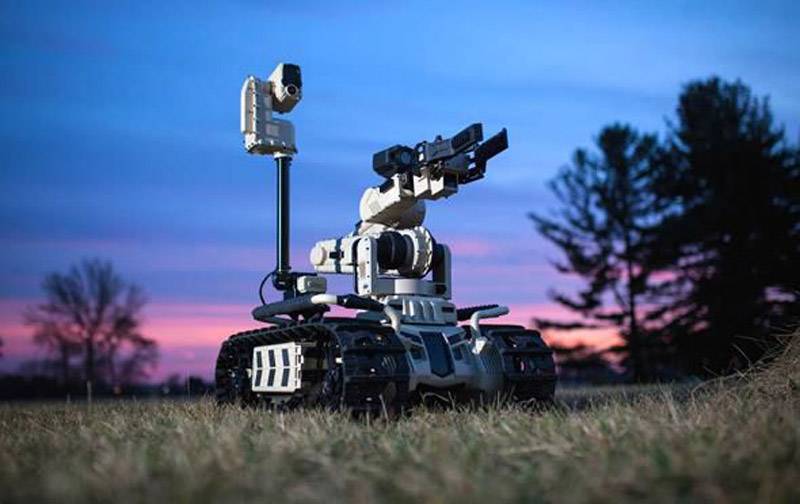
The prospects for the Israeli AHA market are excellent. Roboteam robot
Testing and evaluating robots in an urban environment
In 2017, it was reported that Russia plans to deploy its Uranium-9 robotic system to the troops for further testing and evaluation. The platform was intended for remote operation (in contrast to IED neutralization platforms, for example) and for use in complex urban operations. However, a year later, communications from the war zone ceased to please good the news.
In June 2018, at a conference at the Naval Academy. N.G. Kuznetsov in St. Petersburg it was said that
Samuel Bendett’s Mad Scientist blog outlines some of the key issues Russians have had with the Uranus-9 robot in Syria:
1. The average platform control distance was only 300-500 meters, there were several reliable cases of loss of control over the platform.
2. Low reliability of the elements of the chassis, for long periods of time the machine could not take part in close combat, constant repair was required in the field.
3. Optoelectronic stations allowed reconnaissance and identification of targets at a distance of no more than 2 km, and the platform systems interfered with each other.
4. Cases of unstable operation of the automatic gun were recorded.
A year later, the Russian Ministry of Defense claimed that all the flaws were eliminated, and the Uran-2019 robot and a number of other autonomous platforms were presented at the Army 9 exhibition. Later, in an interview, Samuel Bendett noted that while
Testing and evaluating the portfolio of promising robots
A study of Syrian practices may give NATO countries and their allies some insight into the probable problems that they might face during testing and evaluating AHA capabilities and their role in urban operations. Short communication range, poor autonomy, poor target identification, electromagnetic interference and unreliable service - all these problems must be addressed together by the leadership of the authority responsible for the tests and the industry, as countries are moving towards greater practical application of AHA.
The approaches of the American and British armies clearly demonstrate their serious involvement in innovative testing and evaluation, as well as their commitment to working closely with industry to balance risks and quickly deploy robotic devices.
The US Army's robotics needs determine the accelerated development of AHA technologies, as well as technical and procedural issues. Teams competing, for example, to manufacture Light Robotic Combat Vehicle light combat vehicles for the army, have presented impressive prototypes and it will be interesting to follow the progress of this process.
Textron and Flir's M5 Ripsaw platform includes guided missiles, an optoelectronic/infrared station, and two drone to expand the field of view. Most importantly, if some reports are to be believed, the platform does not require constant remote monitoring.
Meanwhile, HDT's Global Hunter WOLF, another contender for the Light Robotic Combat Vehicle project, has shown higher performance, including longer battery life, in recent trials of the SMET multi-purpose cargo platform (Squad, Multipurpose Equipment Transport) their competitors. The platform is equipped with a 130 hp engine and an on-board generator of 20 kW, that is, it does not need a stop to charge its batteries.
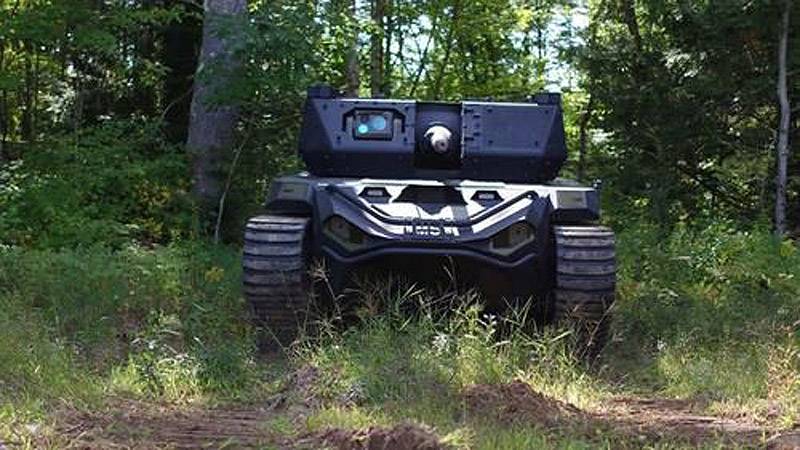
Future Army Batmobile? Texton and Flir M5 Ripsaw Prototype
Meanwhile, the British army already in 2018 decided on the priorities of testing and evaluating AHA platforms, which allowed its combat units to better understand their appropriateness. The Army Warfighting Experiment 2018 (AWE 18) experiment included a three-week intensive test involving four vehicles. The results were positive, so in the AWE 2019 experiment, the program was expanded and the emphasis was on the interaction of inhabited and uninhabited platforms (General Dynamics showed off its MUTT platform). In the AWE 2020 experiment, the British Army will test how habitable and uninhabited platforms fit into its operational management and communications network.
A new model of accelerated prototyping, testing and evaluation, such as, for example, in the US Army, should be more effective, due to which maneuverable forces will gain new opportunities and increase their readiness for future urban combat. As the Chief of the General Staff of the British Army noted at a conference on autonomous systems: “Quick adaptation is the main component of success on the battlefield, and the deployment of next-generation armored combat vehicles and innovative robotic and autonomous systems will keep the British army at the forefront of combat technology, increasing mortality and combat sustainability and competitiveness. ”
Given Russia's problems in Syria in the context of new US and British robotic platform programs, industry and technology procurement managers should continue to collaborate on defining AHA requirements, especially for urban operations. This may require additional investment in more realistic test and evaluation processes — physical, augmented, or virtual — so that the scenarios can be played back withоlower dive level.
Potential Western rivals are taking concerted action to develop their own robotic and autonomous systems by developing highly accurate, intelligent, and inconspicuous, uninhabited long-range weapon platforms. At present, NATO and partner countries are also implementing new programs on autonomous ground platforms. Due to the development of breakthrough technologies in the field of artificial intelligence and robotization, the nature of the combat maneuver has changed. It is becoming increasingly apparent that any conversation about uninhabited technologies can no longer be conducted without taking into account the interaction of inhabited and uninhabited systems.
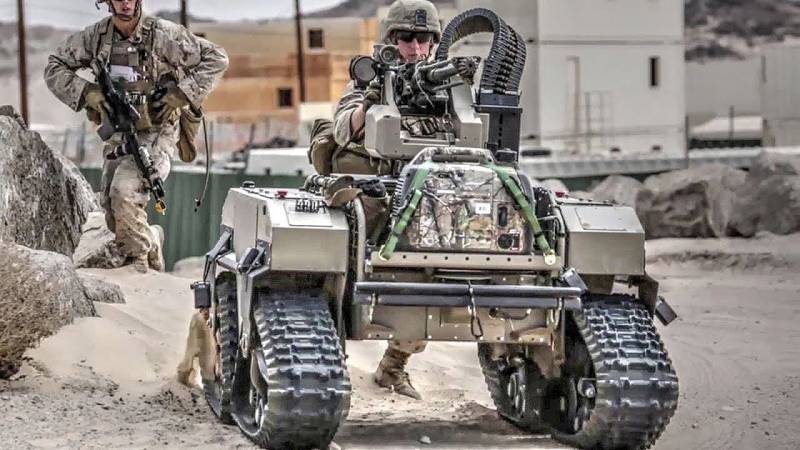
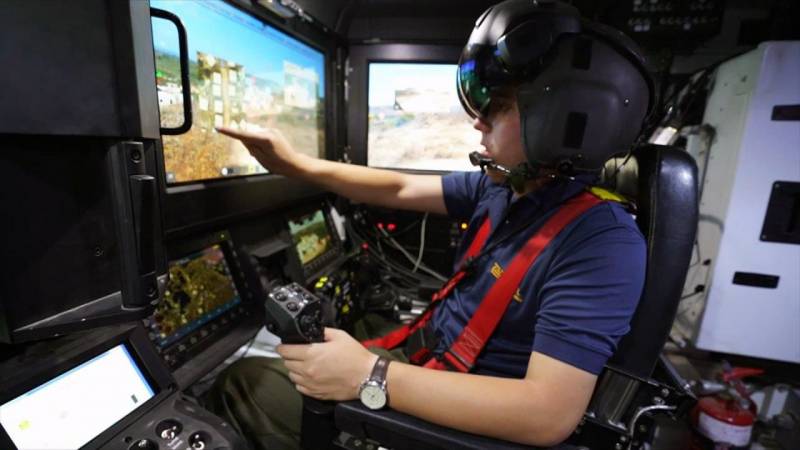
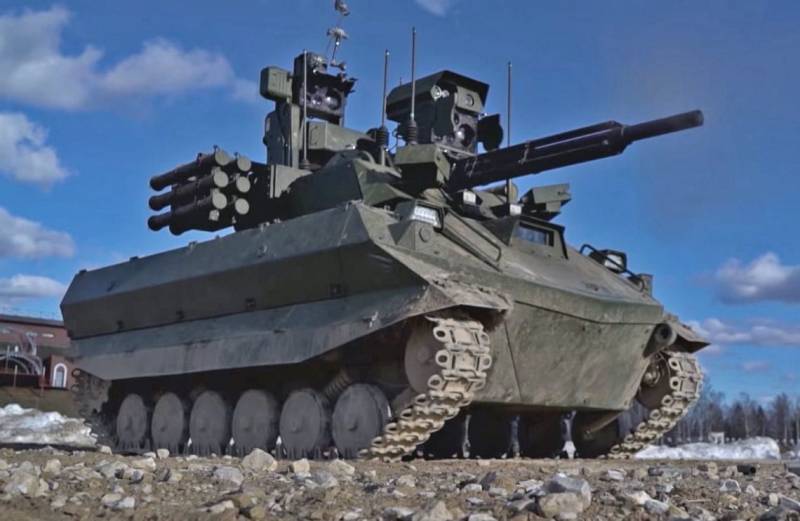
Information